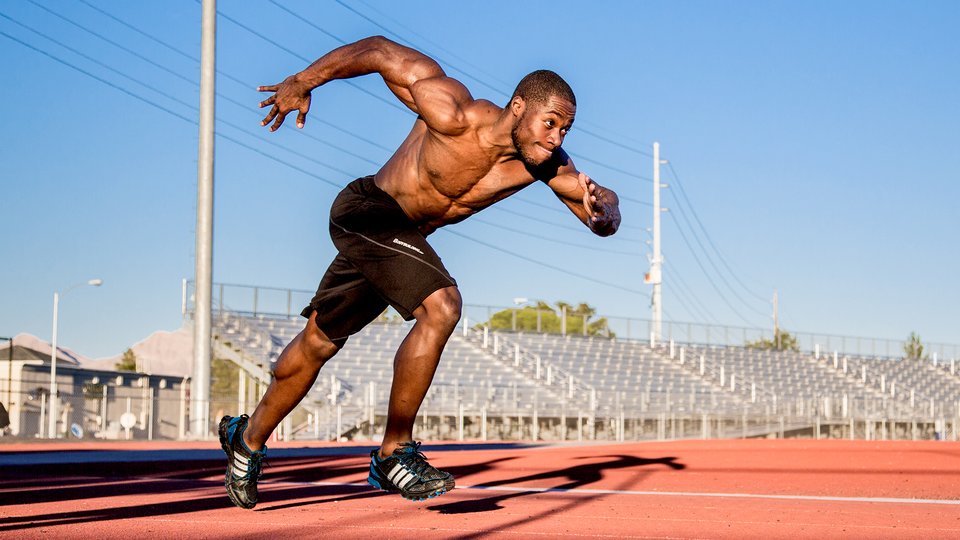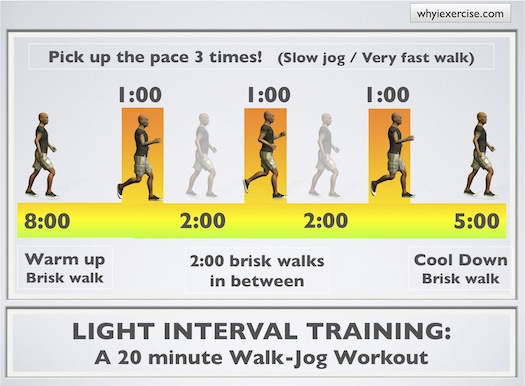
Video
The Ultimate Workout Split For AthletesHigh-intensity interval training for teenage athletes -
Featured Resources. Author: Jessica Shawley. Author: Brett Fuller. Author: Michael Beringer. Author: Tim Mueller. We're Social! Facebook Twitter Instagram Youtube Pinterest. Author: Dr. Robert Pangrazi, Jessica Shawley, and Tim Mueller. Promoting Activity and Success Through Adapted PE.
Robert Pangrazi, Marci Pope and Maria Corte. Bin Ball. Author: Randy Spring. Essentials Team Games Athletics. DuraCoat Dodgeballs. ElevAir Deluxe Parachutes.
OMNIKIN Ultra Balls. Portable Net Systems. NeverWear Segmented Ropes. SST Scooters. Rainbow ToppleTubes. Block 'Em. Basketball Equipment. Baseball Equipment. Disc Activities. Floor Hockey Equipment. Football Equipment. Soccer Equipment.
Calculations showed negative mean ES for change-of-direction ability large , and peak blood lactate concentrations small. Mean duration per training session for HIIT was shorter than for control interventions 28 ± 15 min vs.
Conclusion: The present findings suggest that young athletes performing HIIT may improve certain important variables related to aerobic, as well as anaerobic, performance.
With HIIT, most variables related to endurance improved to a higher extent, compared to alternative training protocols. However, based on ES, HIIT did not show clear superiority to the alternative training protocols. Nevertheless, young athletes may benefit from HIIT as it requires less time per training session leaving more time for training sport specific skills.
Keywords: adolescents; aerobic training; peak oxygen uptake; physical fitness; training intensity.
Traininf Journal of Behavioral Nutrition ffor Physical Activity volume High-intensity interval training for teenage athletesArticle number: 13 High-intensitj this article. Metrics details. High-intensity interval Diabetic retinopathy patient resources HIIT athleetes been promoted as a time-efficient exercise High-intesnity to High-intensity interval training for teenage athletes health and fitness in children and adolescents. However, intdrval remains little consensus tednage the literature regarding its efficacy in children and adolescents with special educational needs SEN. This study aimed to examine HIIT as a means of improving key health and fitness parameters in children and adolescents with SEN. A systematic search was conducted on eight databases MEDLINE, Embase, SPORTDiscus, Web of Science, Scopus, PsycINFO, CINAHL, and Cochrane Library. Studies were eligible if they 1 included an HIIT protocol, 2 examined parameters related to both physical and mental aspects of health and fitness, and 3 examined children and adolescents with SEN aged 5—17 years.
High-intensity interval training for teenage athletes -
Its ability to improve cellular health, cardiovascular fitness, metabolism, and mental clarity makes it a valuable tool in the pursuit of a longer, healthier life. transformationtuesday that glow-up! Which looks better? weightlifting powerlifting crossfit gym gymlife kaizen strength gymporn fitness.
weightlifting powerlifting crossfit gym gymlife kaizen strength gymporn fitness THREE core ways we serve our goal-oriented community. The ultimate individualized training experience. sportsperformance strengthandconditioning ltad cary raleigh morrisville fitness apex durham chapelhill nsca crossfit gymlife.
sportsperformance strengthandconditioning ltad cary raleigh morrisville fitness apex durham chapelhill nsca crossfit gymlife Which class are you signing up for? Are you phoning in your warm-ups? bethestandard movementscreen warmup warmupexercise movementquality sportsperformance sportscience physiotherapy stretching sprintdrills strengthcoach strengthandconditioning exercisescience kinesiology physiology sportsmedicine dynamicwarmup staticstretching functionalmovementscreen.
bethestandard movementscreen warmup warmupexercise movementquality sportsperformance sportscience physiotherapy stretching sprintdrills strengthcoach strengthandconditioning exercisescience kinesiology physiology sportsmedicine dynamicwarmup staticstretching functionalmovementscreen Prioritize linear dominant, true speed sessions for your soccer players.
BeTheStandard soccerspeed soccerspeedtraining soccerfitness soccertraining teamsports strengthcoach sportsperformance trainingsession personaltrainer fitnesscoach physicalpreparation coachingeducation alca highperformance ltad athleticdevelopment weightroom weightliftingcoach strengthandconditioning exercisescience kinesiology.
BeTheStandard soccerspeed soccerspeedtraining soccerfitness soccertraining teamsports strengthcoach sportsperformance trainingsession personaltrainer fitnesscoach physicalpreparation coachingeducation alca highperformance ltad athleticdevelopment weightroom weightliftingcoach strengthandconditioning exercisescience kinesiology What other sports would you add to these lists?
Athletic Lab Competition Center Drive Suite Phone: com Web: athleticlab. Previous Next. Introduction In our quest for a long and healthy life, we often find ourselves exploring various diets, supplements, and lifestyle changes.
What is High-Intensity Interval Training HIIT? The Longevity Link Cellular Rejuvenation: One of the keys to longevity is maintaining healthy cells. Improved Cardiovascular Health: HIIT is renowned for its ability to enhance cardiovascular health.
Enhanced Metabolism: HIIT elevates your metabolic rate, causing your body to burn calories not only during the workout but also for hours afterward. Stress Reduction: Chronic stress is a significant contributor to aging and age-related diseases.
Better Insulin Sensitivity: Insulin resistance is a precursor to type 2 diabetes and is associated with a higher risk of premature aging. Hormone Regulation: HIIT stimulates the production of human growth hormone HGH , which plays a crucial role in cell repair, muscle growth, and overall longevity.
Cognitive Benefits: Physical health and mental health are closely intertwined. DNA Protection: HIIT can protect your DNA from damage by increasing the production of enzymes responsible for repairing DNA. Here are some tips for incorporating HIIT into your routine: Mix it up: Variety keeps workouts exciting and helps prevent plateaus.
Alternate between different forms of HIIT exercises to challenge your body in new ways. Listen to your body: Pay attention to how your body responds to HIIT. Combine with other exercise: Incorporate HIIT into your overall fitness plan, combining it with strength training, flexibility exercises, and other forms of physical activity.
By Athletic Lab T September 22nd, Training Info 0 Comments. Although the higher intensities reached with HIIT formats may appear too difficult for people with chronic diseases, research has shown that the intermittent rest intervals and overall shorter duration of the exercise make HIIT a potentially feasible and safe option for even more serious conditions like lung disease, heart disease, and chronic kidney disease under close supervision.
HIIT has also been found to improve depression more than MICT in people with major depression or bipolar disorders, without reported adverse events. Most research on HIIT and chronic disease is available for cardiovascular disease CVD.
Studies show that HIIT can achieve greater reduction in CVD risk factors than MICT. Use of HIIT programs has shown improvements in cardiovascular health in patients who have had a heart attack, coronary artery bypass surgery, or congestive heart failure.
However, the HIIT sessions were almost 10 minutes shorter than the MICT sessions. A meta-analysis of randomized controlled trials comparing the effect of HIIT versus MICT on blood lipids did not find a significant difference, as both formats improved lipid profiles.
One exception was HDL cholesterol, which appeared to improve more with HIIT than MICT. Regular physical exercise, particularly vigorous aerobic exercise, has been studied to control hypertension, or high blood pressure. HIIT has been found as equally effective as MICT in improving aerobic endurance and reducing shortness of breath in people with chronic obstructive pulmonary disease COPD.
Both HIIT and MICT workouts produced functional improvements of less breathing difficulties during activities of daily living, greater functional capacity, less fatigue, and improved quality of life.
Research on HIIT with other lung conditions such as asthma, cystic fibrosis, and lung cancer is limited or nonexistent. Although available studies in these populations suggest a functional benefit, they did not include control groups and participants were not randomized.
The Centers for Disease Control and Prevention and the American College of Sports Medicine recommend minutes weekly of moderate-intensity aerobic exercise for modest weight loss, and even longer durations for additional weight loss. Therefore, shorter HIIT workouts have been considered a possible format to help individuals meet recommended fitness goals.
Research has found compliance rates to be as high and enjoyable with HIIT formats as with MICT. A meta-analysis of controlled trials following participants with overweight and obesity for an average of 10 weeks who exercised three times a week found that MICT and HIIT programs showed similar effectiveness in producing modest body composition improvements i.
The authors found that HIIT programs incorporating running were more likely to show fat mass losses than with cycling. Most also did not monitor changes in appetite or dietary habits, which could have affected the results.
It has been shown that HIIT may regulate appetite better than MICT, but more studies are needed in this area. HIIT should only be performed in people with diabetes who have well-controlled blood glucose levels, and should be avoided if one has diabetic retinopathy, which increases the risk of detachment of the retina.
In short to medium-term interventions up to 16 weeks , HIIT has been found more effective than MICT at reducing fasting blood glucose, hemoglobin A1c, fat mass, and insulin resistance in people with type 2 diabetes. Both the MICT and HIIT programs were found to be safe and scored high among participants for enjoyability.
HIIT is an effective exercise option to increase endurance and strength in those who have limited time to exercise. Because of the higher intensity format, it is advised to consult with a physician if you have any medical conditions before starting a HIIT program.
All participants new to HIIT should choose a program that is facilitated by an exercise professional. The contents of this website are for educational purposes and are not intended to offer personal medical advice. You should seek the advice of your physician or other qualified health provider with any questions you may have regarding a medical condition.
Never disregard professional medical advice or delay in seeking it because of something you have read on this website. The Nutrition Source does not recommend or endorse any products. Skip to content The Nutrition Source. The Nutrition Source Menu.
Search for:. Home Nutrition News What Should I Eat? Safety People who are deconditioned, recovering from injury, elderly, have overweight, or have medical conditions should be followed and monitored closely by their physician and an exercise professional, because of the higher intensity achieved with HIIT.
Example of a beginner HIIT workout This workout can be performed at home using just an exercise mat and a timer or clock. A 5-minute warm-up of walking or marching in place should be performed before the workout, and a minute cool-down of slower movements allowing the heart rate to gradually decrease, along with stretches, should be included to end the workout.
Cardiovascular disease Most research on HIIT and chronic disease is available for cardiovascular disease CVD. Hypertension Regular physical exercise, particularly vigorous aerobic exercise, has been studied to control hypertension, or high blood pressure.
Pulmonary disease HIIT has been found as equally effective as MICT in improving aerobic endurance and reducing shortness of breath in people with chronic obstructive pulmonary disease COPD.
Obesity The Centers for Disease Control and Prevention and the American College of Sports Medicine recommend minutes weekly of moderate-intensity aerobic exercise for modest weight loss, and even longer durations for additional weight loss. Type 2 diabetes HIIT should only be performed in people with diabetes who have well-controlled blood glucose levels, and should be avoided if one has diabetic retinopathy, which increases the risk of detachment of the retina.
References Thompson WR. Volume 25; Issue 1: Taylor JL, Holland DJ, Spathis JG, Beetham KS, Wisløff U, Keating SE, Coombes JS. Guidelines for the delivery and monitoring of high intensity interval training in clinical populations.
Progress in cardiovascular diseases. American College of Sports Medicine. Martland R, Mondelli V, Gaughran F, Stubbs B. Can high-intensity interval training improve physical and mental health outcomes? A meta-review of 33 systematic reviews across the lifespan. Journal of sports sciences.
Ross LM, Porter RR, Durstine JL. High-intensity interval training HIIT for patients with chronic diseases. Journal of sport and health science.
Background: Teenaeg interval training HIIT is as a time-efficient alternative to moderate- inrerval low-intensity continuous exercise athletds improving variables related to endurance High-inteensity anaerobic performance Stimulating herbal supplement High-intensity interval training for teenage athletes and adolescent athletes. Objectives: To assess original research about enhancement of endurance and anaerobic exercise performance in young and adolescent athletes performing HIIT. Method: Relevant articles published in peer-reviewed journals were retrieved from the electronic databases PubMed and SPORTDiscus in December Inclusion criteria were: i controlled trials HIIT vs. Results: Twenty four studies, involving athletes mean age:
0 thoughts on “High-intensity interval training for teenage athletes”